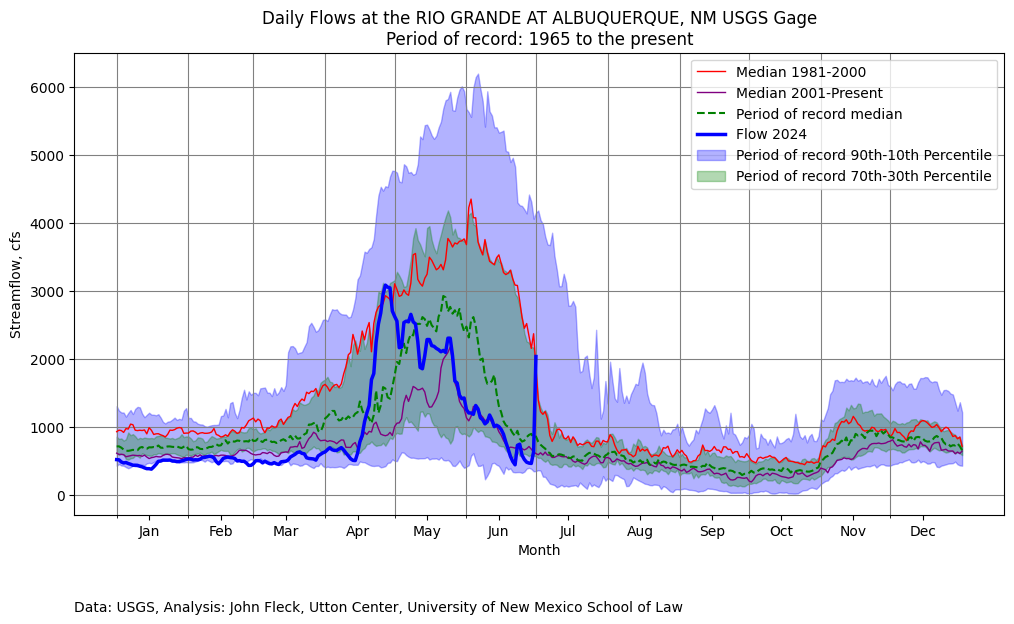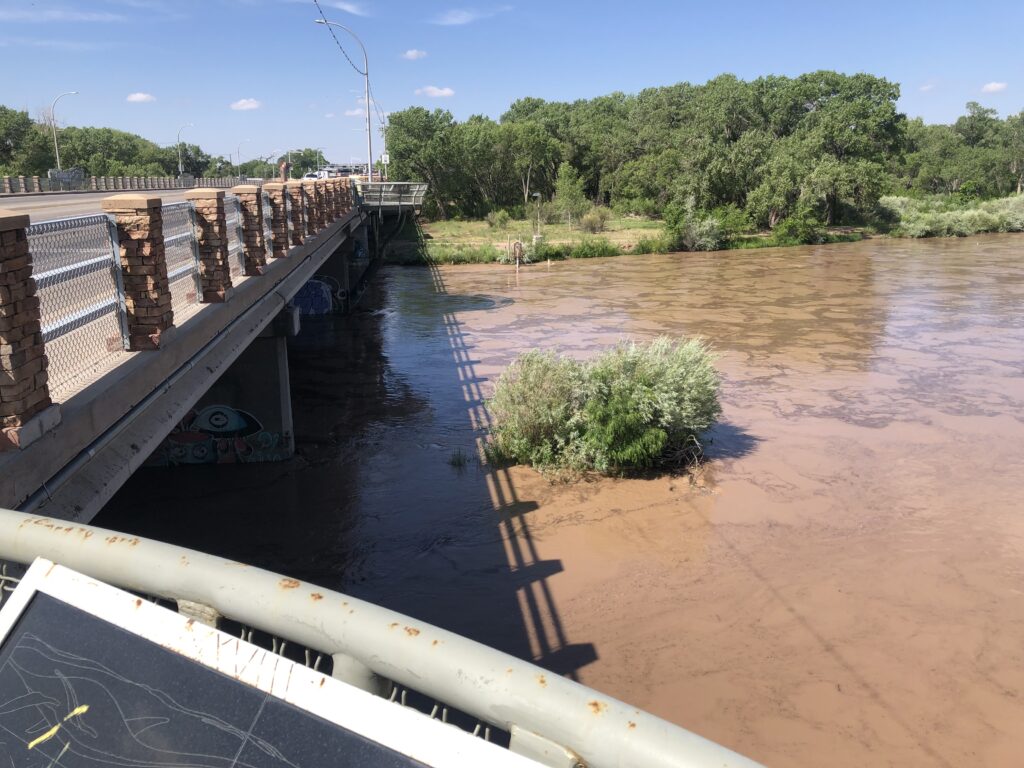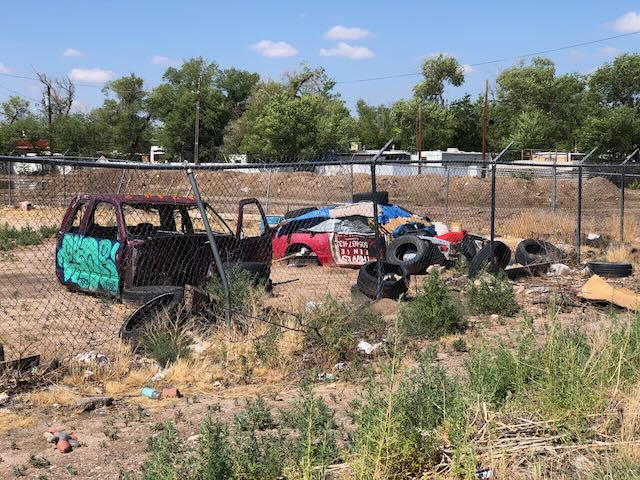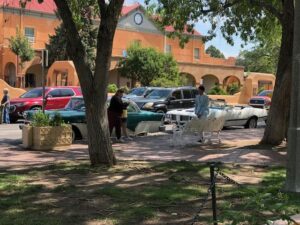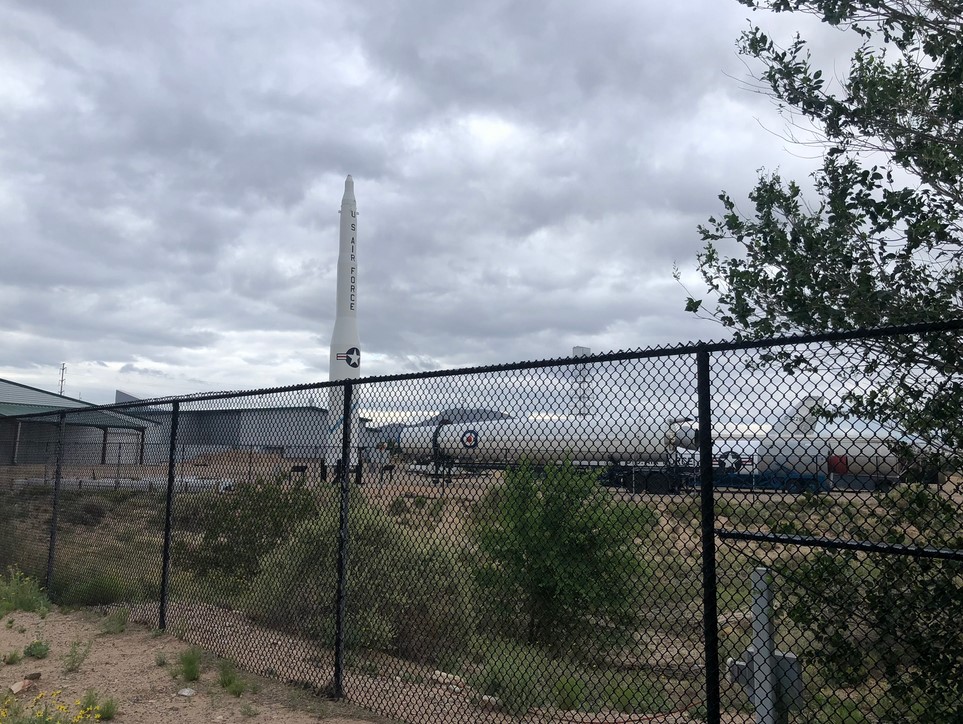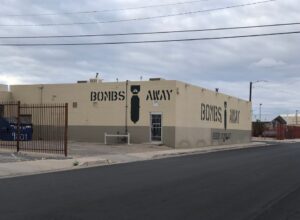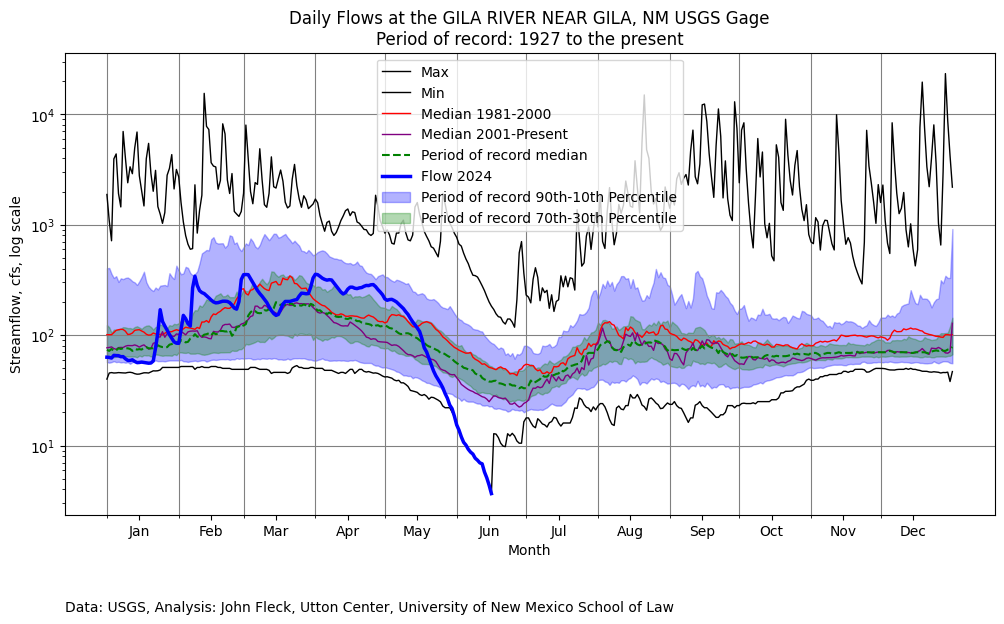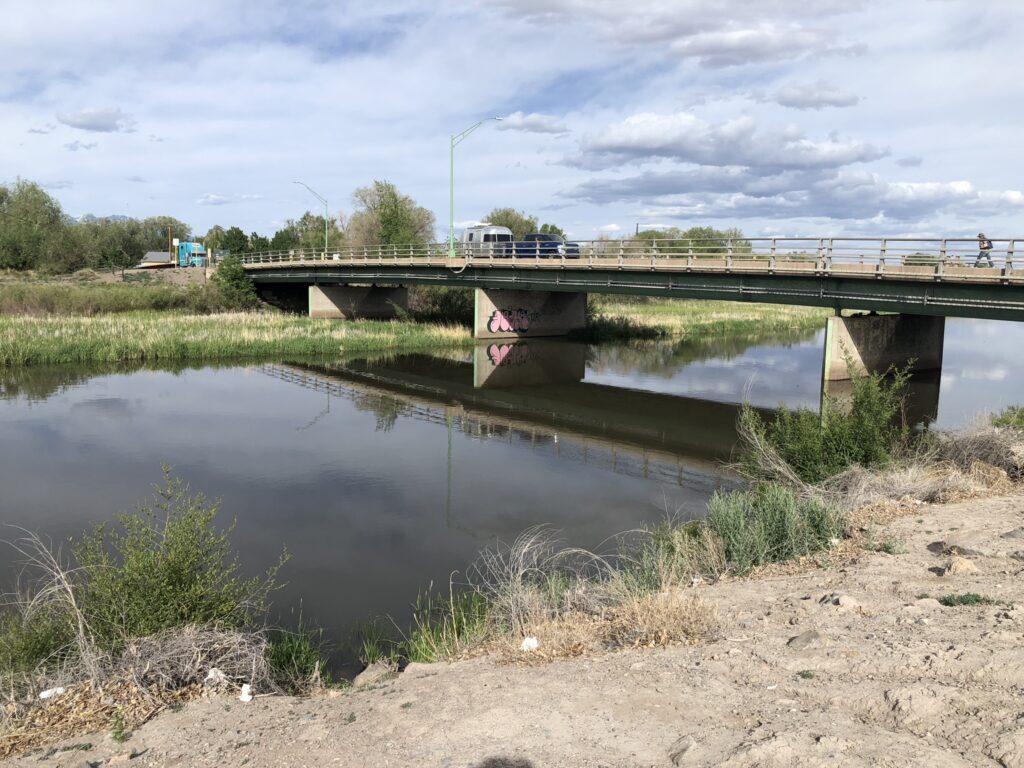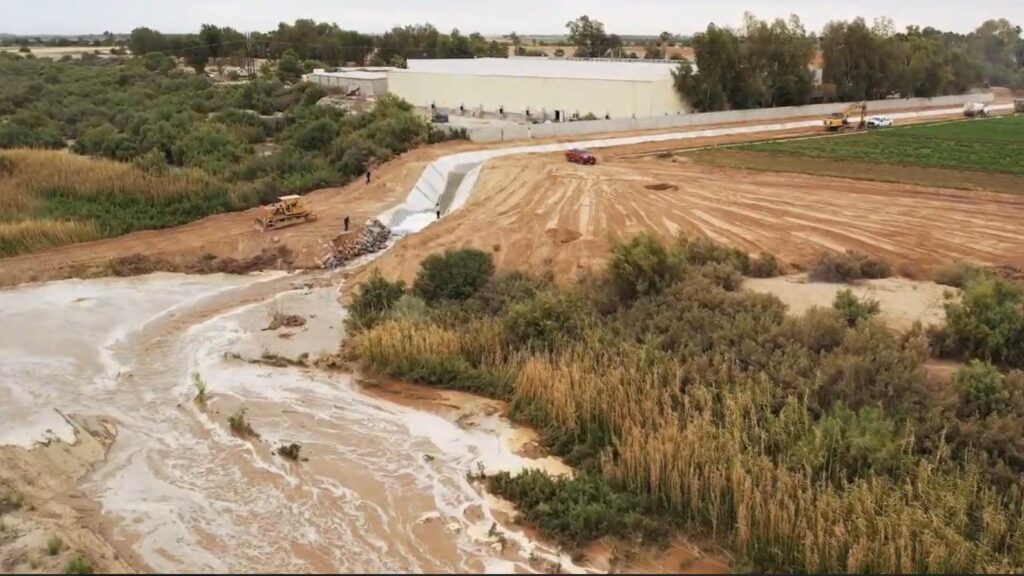
With engineering help, water flowing into the Colorado River Delta. Photo courtesy Raise the River
Forgotten in all of the noise around the Colorado River right now is this moment of hope – water again flowing in the Colorado River Delta.
Under the 2017 agreement between the United States and Mexico known as Minute 323, we have 210,000 acre feet of water set aside for environmental flows through 2026 – one third provided by the United States, one third by Mexico, and one third by environmental NGOs – in the long-dry river channel through the Colorado River Delta.
Audubon’s Jennifer Pitt’s mention of the flow came during the last panel of last week’s Getches-Wilkinson Center annual Colorado River conference at the University of Colorado Law School. Managing the pulse flow to maximize environmental benefit requires, ironically, the same sort of engineering that on a much larger scale dried the delta river channel in the first place – routing water through an irrigation system to deliver it at the point of maximum environmental benefit, feeding a strip of riparian vegetation. That’s how we do environmental flows now.
It made me smile, remembering the joy of watching the pulse flow a decade ago, an event that was a pivot point in my life. It was a reminder that, amid sturm und drang of the current Colorado River, good stuff is possible.
Out of the shadows
Co-sponsored by the Water and Tribes Initiative, the conference again moved the role of the Colorado River Basin’s 30 sovereign Tribal Nations into the foreground, in particular celebrating the new water settlement among the Navajo, Hopi, Southern San Juan Paiute tribes, the state of Arizona, and the federal government. It’s a sweeping agreement that could, if it can cross the next hurdles before it, ensure water supplies for what one a member of my brain trust once described as the place of greatest water poverty in the nation.
“We refused to be in the shadows any longer,” Hopi Chairman Tim Nuvangyaoma said during a Friday morning session.
Lorelei Cloud, vice chair of the Southern Ute Tribal Council and a member of the Colorado Water Conservation Board, talked about the importance of normalizing tribal voices at the decision making table, which should have been obvious a century ago, but is increasingly a no-brainer today.
As the Colorado River community debates where and how cuts should be made to bring water use into line with a climate change-shrunken supply, “First peoples of this land should be the last to be cut,” Gila River Indian Community Gov. Stephen Roe Lewis said.
Still in the shadows
The shadowy ongoing discussions among the seven U.S. basin states got a brief airing in a panel of six of the seven states’ principals – the governors’ representatives in the ongoing negotiations. They appear as stuck as they’ve been since December’s CRWUA fireworks and the competing proposals of March.
I am sympathetic to the difficult position these people are in – political demands from the home crowd to fight for their water colliding with the reality that the water the homers want is simply not there in the quantity they would like. The result was a litany of “praise us for the conservation we’ve already done” without much clarity beyond everyone’s public negotiating positions: the Lower Basin’s “We own the structural deficit and if deeper cuts are needed they need to be shared,” and the Upper Basin’s “We already suffer cuts, it’s on the Lower Basin to cut deeper if needed.”
On its face that’s a conflict being readied for the Supreme Court, and I’ve begun to think seriously about what such a path might look like in practice. Everyone says they want to avoid this, yet seem powerless to prevent it. A friend noted the seeming powerlessness being voiced by the state officials, helpless to keep the bus they’re driving out of the ditch.
They’re like Howard the Duck, “Trapped in a world they never made.”
Back out of the shadows: A C-SPAN for Colorado River Basin water management talks?
My favorite question of the day came from an audience member asking whether there should be some sort of a C-SPAN-like public forum so we could all watch the discussions now conducted behind closed doors. There was a time not that long ago that I would have seen that as a terrible idea. The people involved need a safe space to explore the sort of compromises that would get them crucified back home if they did it in public, I used to think.
But given the current logjam in the states’ discussions, which seems to leave us at increasing risk of potentially disastrous litigation, I’m not so sure that the safe space is serving us particularly well. While the Basin States’ discussion remains opaque and unproductive, in a way that increasingly doesn’t seem to be serving me as a “stakeholder” whose community’s water depends on the river, a bunch of parallel processes happening in far more public ways – see for example the discussion of tribal issues above, and the work on restoring environmental flows in the delta – seem increasingly to be where the useful action is.
John Berggren, from Western Resource Advocates, made this point in a talk about Colorado River process, quoting here from a chapter he and I and some other folks wrote for the book Cornerstone:
Inclusivity does not threaten the special status of existing decision-makers; inclusivity puts those decision-makers in a setting where they have more resources, information, and perceived legitimacy to bargain. The Colorado River Compact, after all, is a bargain—a negotiated agreement born from the realization that it was better to make a deal than to do nothing, to litigate, or to delegate important regional decisions to a distant national government.
Along the C-SPAN lines, Berggren noted the work of the Arizona Reconsultation Committee, which has been super C-SPAN-like in the way it has created a framework for a big messy public discussion in Arizona about the important questions.
The flaw in the current process is made clear by basin states’ impasse.
Berggren warmed my heart with this quote from Reuel Olson, whose 1926 doctoral thesis was the first detailed academic look at the Colorado River Compact:
It does not help much to say that what is needed is an equitable division of water between the states. What is needed is a standard which may be applied in order to determine what is an equitable division.
(Fun aside: Comparing notes after his talk, both John and I seem to have bought our copies of Olson’s book from the same Salt Lake City used bookstore.)
A century after Olson said that, we seem to have the same impasse. Tough negotiations by the various states trying to protect their own interests leaves out all kinds of equities, all kinds of values – including mine.
To paraphrase California’s J.B. Hamby, all water users in the basin can reduce their use. I’m sure Hamby wasn’t paraphrasing me when he said that, but he could have been. Here’s how I put it in the concluding chapter of my book Water is For Fighting Over:
Recent years, especially during the drought in the twenty-first century, saw a rash of … articles: “Scarce Water and the Death of California Farms,” “The Dust Bowl Returns,” “A ‘Megadrought’ Will Grip US in the Coming Decades”, “Colorado River Water Supply to Fall Short of Demand.”
These dire stories fuel fears that the only way to save yourself is to fight your neighbors for every last drop. But if you are able to sidestep the crisis narrative and recognize that your community can thrive with less water, then the fight with your neighbors seems less necessary and the risks of water wars and a crash diminish. It’s time to stop fighting over water….

